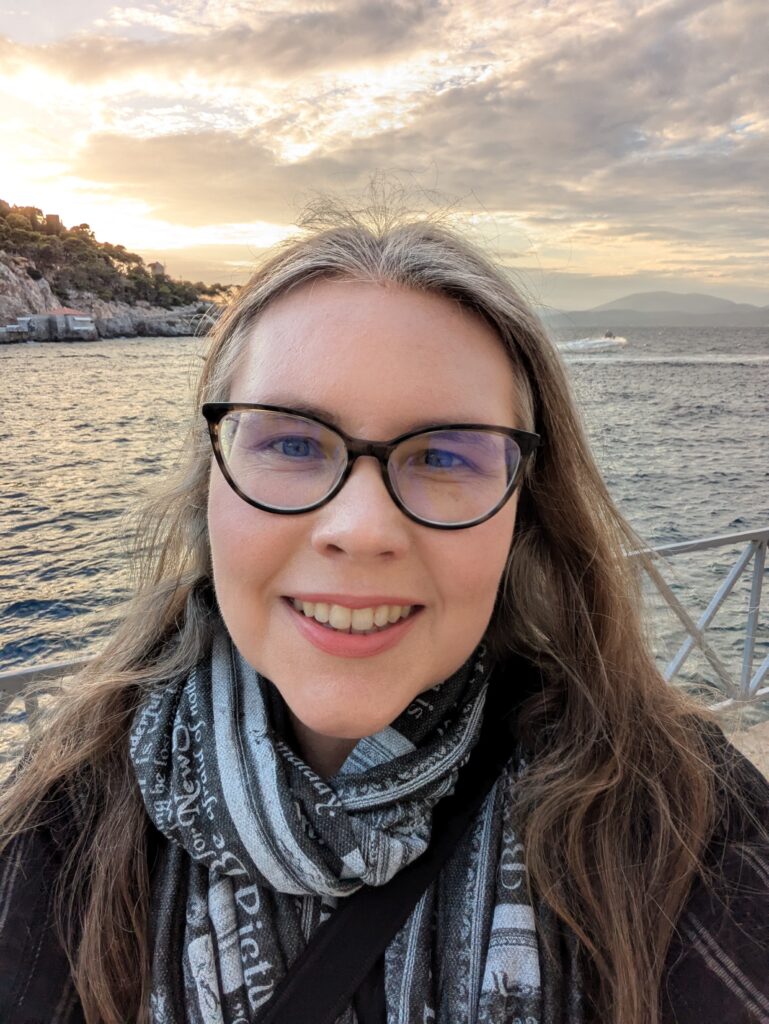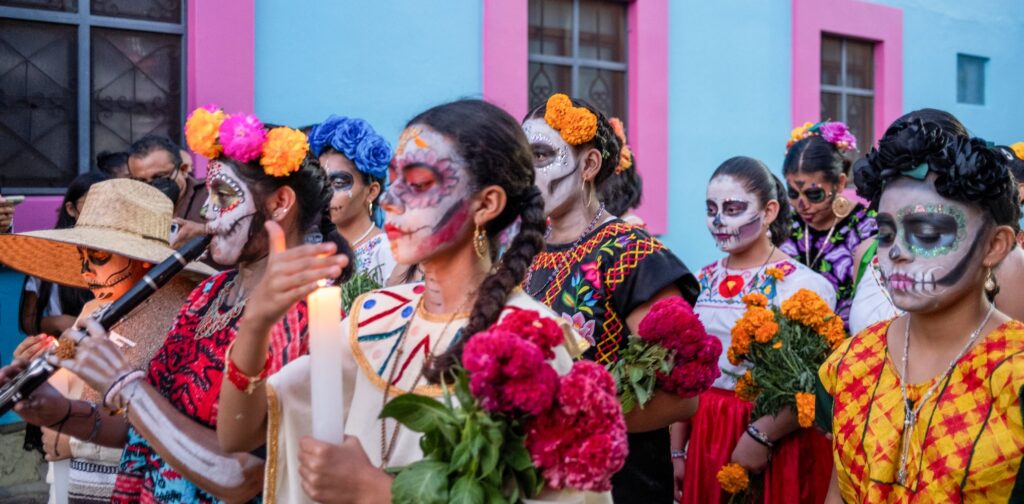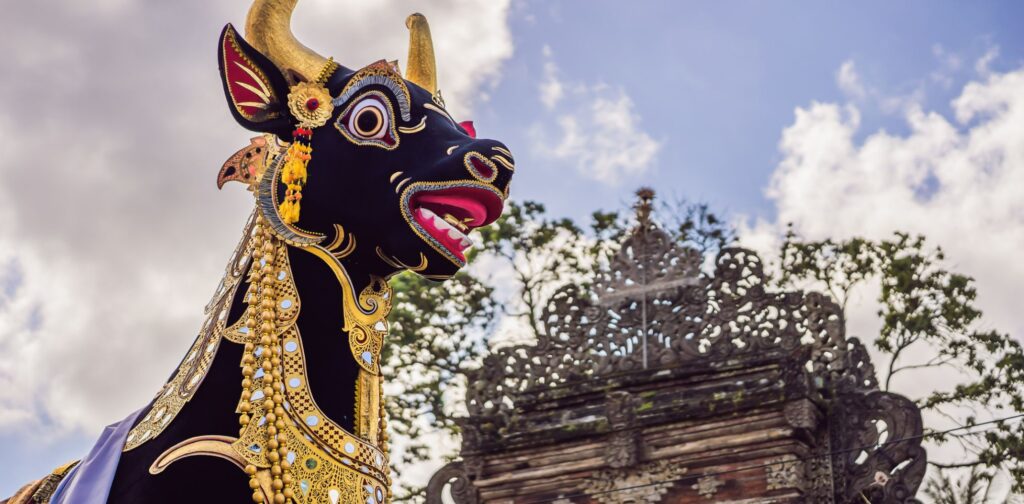Beyond euphemisms and metaphors: Dr. Kathryn Inskeep on IHP Death & Dying
January 22nd, 2025 | IHP, SIT, SIT Study Abroad
By Joanna Tanger

SIT’s International Honors Program (IHP) recently launched a new program focused on, of all things, dying. In IHP Death & Dying, students will explore the meanings of death and how this “taboo” topic inspires artistic expression and social movements and reinforces cultural identities.
The subject of death is so taboo in American culture that people use metaphors to avoid talking about it while also using death-laden language in everyday communication. This contradiction leaves many Americans “death illiterate,” with limited functional knowledge of the process of death and dying, the psychology of bereavement, or end-of-life planning. IHP Death & Dying starts in New York City, followed by travel to Ghana, Mexico, and Indonesia, to understand how cultural practices, social policies, and creative communities confront and celebrate death.
SIT’s Academic Dean of Assessment and Learning Support Dr. Kathryn Inskeep was instrumental in the creation of the program. We spoke to her about IHP Death & Dying, the purpose of the program, and who should participate.
Can you tell us more about IHP Death & Dying? Why did SIT create this program?
I have always maintained that all subjects are worthy of academic inquiry. Death is no exception. However, the field of thanatology is nearly invisible in the academy. Despite decades of great work done by those in the death education movement, individual classes on death and dying are few and far between, housed across many different departments. The courses that do exist are in high demand, many with multi-year waitlists.
Conversations about death, let alone formal education, are still largely taboo in mainstream American culture. We use euphemisms and metaphors to avoid talking about death, while at the same time we use the actual words “dead” and “dying” metaphorically, to express our emotional states of being. I find this paradox fascinating as I see it as a simultaneous morbid fascination and aversion to death.
With these thoughts came the realization that SIT is uniquely positioned to provide an entire semester of study to explore the meaning(s) of death, from diverse disciplinary and cultural perspectives. The International Honors Program model, consisting of multi-country comparative study, makes it possible for U.S.-based college students to learn about what death means within the contexts of more death-accepting cultures. This program was created to meet educational needs that most universities don’t fulfill and that few could do from such a global perspective.

What makes IHP Death & Dying unique, and what are some of the program highlights?
This program is unique within the field of education abroad. There is no other semester-length program dedicated to the subject of death, dying, and grief, let alone one that travels to three continents for an in-depth, comparative study. If anyone can do it, SIT can.
I have seen the strength of our local teams and their care for their communities and our students. I know that they can create transformative learning experiences. I have witnessed their ability to teach difficult subjects from an ethical and empathetic orientation.
IHP Death & Dying is unequivocally a program about death and dying. At the same time, it is not just about death and dying. This program is about belief systems, food cultures, music, social movements, art, popular culture, climate change, demographics, communities, identity, and so much more.
Death is our lens, not our limitation, in how we engage with people, places, and practices.
Program highlights include conversations with death-care workers, cooking classes where students learn to prepare traditional foods served at funerals, a Q&A with dark tourism operators, panel discussions with religious leaders, and site visits to Indigenous communities.
Who should apply for this program?
The simplest answer to this question is anyone who is curious about death and dying, whether that curiosity stems from an academic, professional, artistic, and/or personal interest.
The emphasis on expanding death literacy has practical implications for all students. I firmly believe that developing death literacy—understanding end-of-life planning and learning how to become an ally to those in mourning—these are essential life skills that are seldom taught in educational settings.
With courses that explore death from the perspectives of anthropology, sociology, and the humanities, the program has a broad liberal arts appeal. The project-based learning course affords students considerable autonomy in shaping their line of inquiry and format of their project, making it accessible to a broad range of college majors.
I see this program as especially relevant to students who are considering professions that would place them near the dying and bereaved, such as healthcare professions, mortuary science, social work, psychology, addiction and recovery counselling, veterinary science, criminal justice, and pastoral care or ministry.

What advice do you have for a prospective student interested in IHP Death & Dying?
My general advice for anyone considering a semester abroad is to do their research. In addition to online searches, I cannot emphasize enough the importance of talking to academic and study abroad advisors when determining an appropriate and enriching program. There are many ways to study abroad in addition to different locations and subjects. It’s important for students to know what options are available to them so they can make informed decisions.
For students interested in IHP Death & Dying, I encourage them to review SIT’s website, read through the sample syllabi, and contact our admissions department with questions. I would also advise students to consider their motivations for joining this program, not only what they want to gain from the program, but the big questions they wish to explore through this program and why those questions are significant to them. I consider this kind of reflection a form of research.
People tend to have one of two responses to this program: instant skepticism or enthusiasm. The enthusiasts tend to get more excited as they hear about the program. Skeptics become progressively intrigued as they learn more about it.
IHP Death & Dying tackles challenging topics during the semester. What mental health resources are available for students throughout this program?
In developing this program, we collaborated with SIT’s Office of Student Health, Safety, and Well-being early in the process. While all SIT programs address critical global issues and delve into serious topics, this program can be especially emotionally charged. We have applied a trauma-informed pedagogy in designing the curriculum and experiential learning activities, community-building, and scheduling that prioritizes emotional well-being, so students will be prepared to process the academic and affective dimensions of learning. In addition to the online and on-site mental health support available for all students, we are developing targeted pre-departure programming and resources to equip students with useful tools and strategies for studying death in-depth.
To learn more about IHP Death & Dying, please visit https://studyabroad.sit.edu/program/fall-2025-ihp-death-dying-perspectives-practices-policies/.
